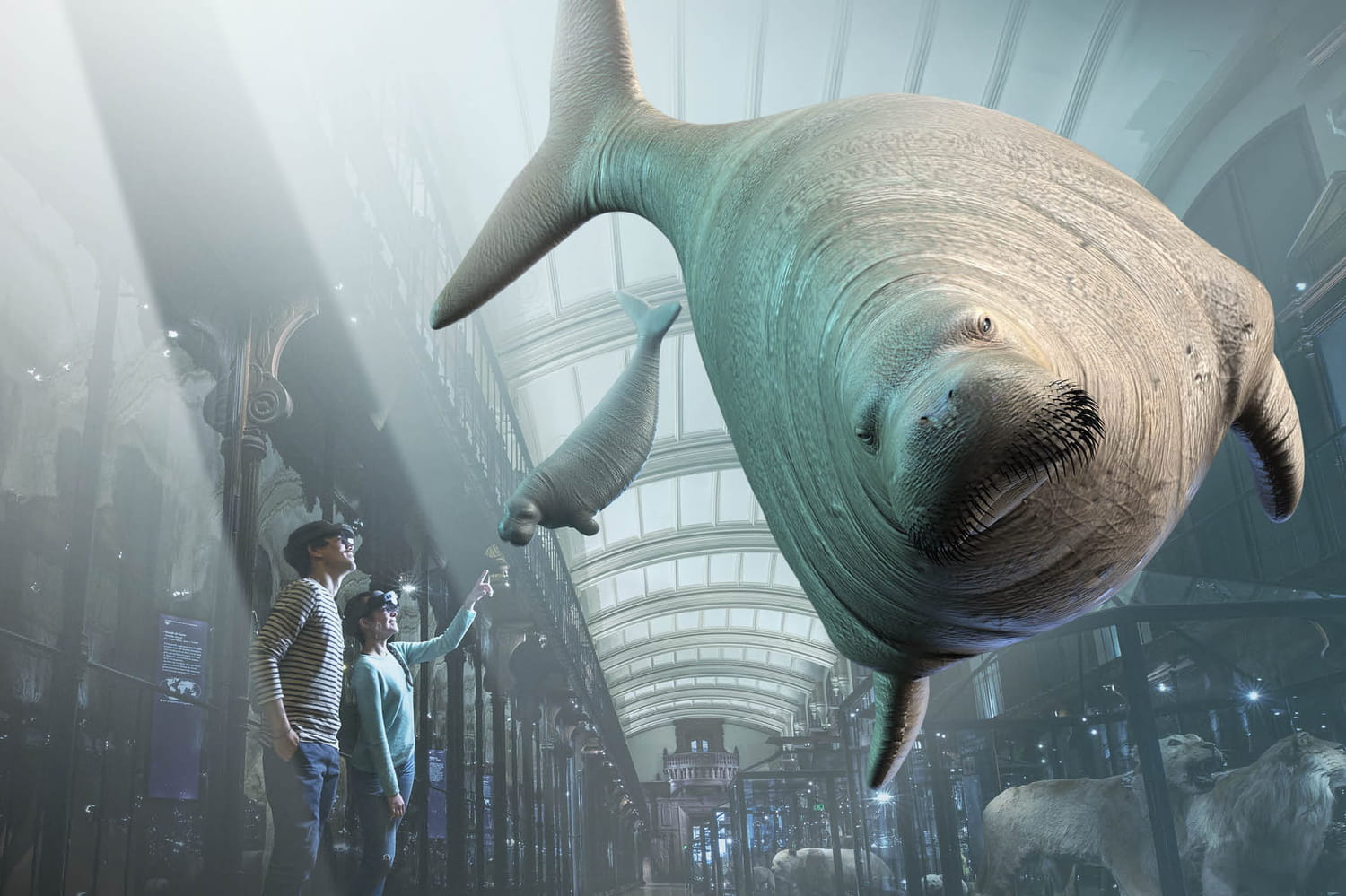From June 16, do not miss the exhibition “Relive, animals missing in augmented reality” at the National Museum of Natural History.
(Update from June 7 at 4:10 p.m.). The Jardin des Plantes de Paris And its 24 hectares makes it possible to take the air and discover the joys of nature in the heart of the capital. This May 19, her menagerie, his galleries and her greenhouses reopened. Established, in the Paris Plants GardenLA menagerie du Jardin des Plantes is today a renowned scientific research center. Opened in 1794, it is One of the oldest zoo in the world. It is at the heart of the history National Museum of Natural Historyand houses many species of mammals, such as reptiles, amphibians, birds, insects, and even arachnids. And that’s not all! The large gallery of evolution offers many exhibitions for children. An ideal outing to do with children, during weekends or school holidays.
Many exhibitions attract young and old every year. For a fun and educational outing, go to The Children’s Gallery which offers a permanent exhibition for the curious little ones of nature. The large gallery of evolution transports them through the times. Small visitors discover hanging whales, naturalized animals illustrating the African savannah and those who populate the oceans.
Relive, animals missing in augmented reality
From June 16, 2021, the exhibition Relive, animals missing in augmented reality Settles in the large gallery of the evolution of the National Museum of Natural History. Its creators make “resuscitate” eleven disappeared species thanks to augmented reality: the dodo, the saber tooth tiger, the large penguin, the giant turtle, the elephant bird, the sea cow (or Steller rhytine), as well as the round helmet calao, which has not yet disappeared but which is strongly threatened. Children (and their parents) can approach them and see them evolve from every angle thanks to a VR helmet. Five people at the same time will benefit from this immersive visit of about fifteen minutes, guided by a migratory pigeon with silver pink wings, another disappeared species. Be careful when providing your reservation, the exhibition is only accessible from 8 years old.
The menagerie du Jardin des Plantes is one of the oldest zoos in the world and now houses 500 animals, 40% of which are threatened species. His teams took advantage of the last confinement to enlarge the gaming space (the biggest bovid in the world) classified vulnerable by the IUCN by 1/3. This small zoo specializes in endangered species, little known to the general public as the short -tailed padememelon or tricolor epipedobates. Pademelon comes from an Aboriginal word meaning “little kangaroo of the forest”. It is the smallest of macropodids, a family to which Wallabies and Kangaroos also belong. There are 7 species divided into Australia, Tasmania and New Guinea. Short-tailed padememelons live in Papua New Guinea, in unprotected areas. They are chased, often using dogs, for their meat. For the past twenty years, around 30% of the population has thus disappeared, especially in the south-east of the island, this species has been classified as “vulnerable” on the IUCN red list. The menagerie group is made up of 4 individuals and a young person born at the start of the year.
The menagerie also welcomes tricolor epipedobates, a terrestrial frog from Ecuador since 2014. These terrestrial and daytime frogs live in forests close to wetlands. Thirty individuals were born recently in the menagerie. On March 5, the birth of 2 golden lions tamarins, primates of the Callitrichidae family, was also one of the highlights of the confined menagerie. Finally, the Arabian Oryx is the smallest of the Oryx and the only one who does not live in Africa. The species is now classified as “vulnerable” on the IUCN red list. There were only three births in France this year, including one at the men’s menagerie on February 21. Finally, on the occasion of its reopening, the zoo launches its visit application for 4-12 year olds (up to 1.5 hours of play), there is an application for 4-6 year olds and one for 7-12 year olds which allow you to discover 15 species and learn while having fun while respecting the current health rules.
Java is an orangutan female of Borneoborn October 17, 2018 at the Plantes garden menagerie. This protected species is only present in 6 zoological parks of France and appears on the list of the International Union for the Conservation of Nature (IUCN) which considers it as a “critical danger of extinction”. In 20 years, orangutans have indeed lost 80% of their territory and their population has been reduced by half. It would remain between 50,000 and 60,000 orangutans de Borneo. Protective measures are implemented (creation of protected areas, rehabilitation centers, etc.) and the menagerie participates in particular in international breeding plans.
Most mammals appear around a driveway. Some animals are hosted in logs in logs, mud and thatched roofs, others in the large aviary or the singerie, vivarium and wildlife, three magnificent art deco style buildings. But if the place is bucolic, it is also educational. Member of the European Association of Zoos and Aquariums, the menagerie is today engaged in scientific missions for preserving and protecting species. A largely present involvement within Guided tours during which the major threats are discussed on the whole of biodiversity. And that’s not all! Many activities are organized for children at the menagerie in the Jardin des Plantes. If you are looking for a family outing idea, you will probably find thematic workshops according to the age of your children, even for toddlers. Finally, exhibitions, guided tours and conferences are also offered.
57, rue Cuvier – 75005 Paris
Phone : 01 40 79 30 00
Open from 10 a.m. to 6 p.m. every Wednesday and weekends and every day during school holidays.
Price: 13 euros and reduced rate: 10 euros. TRONT Package: 40 euros (2 full price and 2 reduced rate).
Official website of the Plantes Garden Menagerie: www.zoodujardindesplantes.fr








